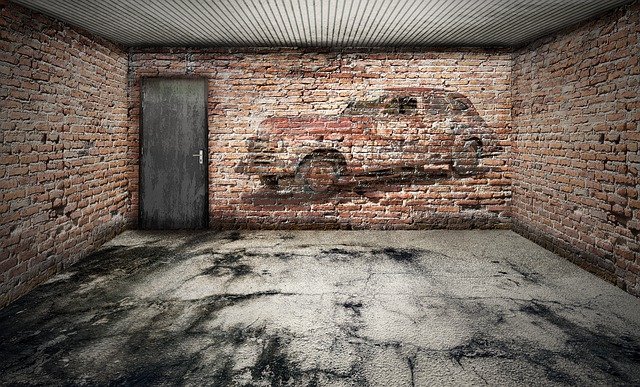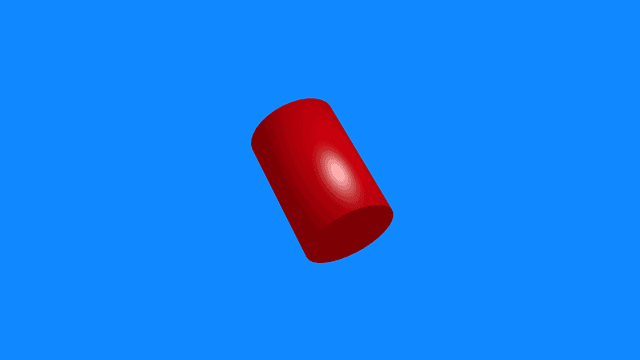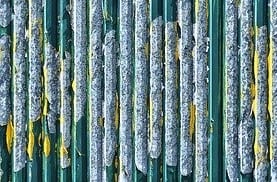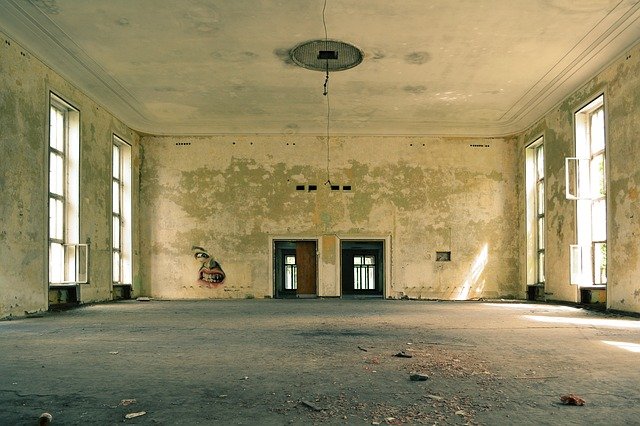How to Paint a Metal Building
Metal structures and buildings are emerging trends in the construction industry. Whether the building is temporary or permanent, painting is paramount in creating an impressive outlook and adding aesthetic value in the vicinity. 
On how to paint a metal building – select materials and tools required, strip old paints and rust (if any), prep the surface, select and prepare the primer, apply primer, select and prepare finish paint, and apply the final coat before leaving it to dry naturally.
Further, you must match the undercoat paint with the right primer to avoid peeling and chipping, which is common due to poor application method. For safety purposes, consider wearing the protective gears and adhere to precautions given in this article during paint application.
Details: How to Paint a Metal Building
Besides, painting eliminates rust and boosts the building’s service life.
However, painting metal is not easy, especially when wrong paint selection and procedure is undertaken. The tools and material required include:
- Polishing machine and Sander
- A paintbrush and Blower
- Waterpoint and Degreasing cleaner
- Fine-grit sandpaper and Paint scraper
- Respirator and paint tray
- Safety goggles and metal primer
- Painter’s tape and Finish paint
- Paint roller and Overall
- Safety Boots and Stripping chemical
- Patching compound and Filler
- Power source and Connecting Cable
a. Select the Right Paint and Primer
When selecting primer and finish paint for your metal building, consider factors such as prevailing weather, the climatic condition of the area (wet, dry, or semi-arid area), the section under paint application (is it siding, roofing, or railing metal?), and the type of metal under paint application.
Oil-based paint can be used on the railing and exterior metal siding, while the metal roofing should be painted with special satin paint, oil-based, or acrylic paint that integrates UV-rays blockers and fade resistance.
Further, the roofing paint should resist glare effects and reflect solar radiation.
The Interior metal walls should be painted with acrylic-latex paint to boost their stickiness level and reduce adverse effects of VOC compound within the room upon application. Pure latex paint may not be the best for interior metal, since the solvent stickiness is low and chips or peels faster under humid conditions.
When selecting primer, let your choice match the finish paint selection – oil-based primer should be used with oil-based finish paint and vice versa. Importantly, your primer or finish paint should be fast-drying.
b. Prepare the Metal Building
The initial stage of metal painting entails surface preparations, which includes the followings steps:
Stripping paint and rust
- Wear the protective gears (overall, gloves, safety goggles, boots, and respirator) for safety purposes
- Apply paint stripper using a paintbrush or a roller until the entire surface is covered
- Leave the surface to quench for 20 minutes or otherwise advised by the manufacturer
- Using a paint scraper, scrub old paint and rust gently. Be careful not to damage the primary surface material
- Use a blower to remove/blow off the paint/rust debris from the surface
Sanding
- Connect the sander to the power supply and press the power button on
- Gently, sand the metal surface to attain a soft finish
- Blow off dust particle (using a sander) and repeat the steps until the entire surface is clean
- Mop the surface and let it dry to touch
Repair Damage Sections
- Using a patching compound and filler, seal the damaged section sufficiently
- Scrap off excess filler from the surface (using a putty knife) before drying occurs
- Leave the surface to dry – 5 to 10 minutes
Polishing
- Plug the polishing machine into the power supply and switch on
- Gently, polish the repaired section. Be keen not to cause further damage
- Go to the interior part and polish the metal sufficiently
- Cleaning and mop the metal surface
- Leave it to dry
c. Prepare the Primer
- Gently, pour the primer into the bucket
- Thin the primer sufficiently as per the manufacturer’s instruction
- Fletch a little primer and carry out a drop test experiment to ascertain the stickiness level
NB: Well-prepared primer should load onto a roller sufficiently without much drain or run.
d. Apply the Primer
- Dip the roller or a paintbrush into a bucket with primer
- Load appropriated and get rid of overload
- Run the roller back and forth on the metal surface – the actual application
- Repeat the step above until the entire surface is completely
- Leave the primed surface to dry for about 2 hours or otherwise advised by the manufacturer’s
e. Prepare the Finish Paint
- Pour the finished paint into another empty bucket, gently
- Add thinner right quantity (as directed by the manufacturer)
- Stir the mixture thoroughly to attain a uniform solvent solution
- Fetch a little mixture and perform a drop test experiment to observe the stickiness and coat appearance
f. Apply the Finish Paint
- Dip the paintbrush into the paint bucket and load it sufficiently
- Cut off excess paint from the brush to prevent surface drip
- Apply (back and forth) on the metal surface gently
- Repeat the steps above until the entire surface area is well painted
- Cut metal corners with an angled paintbrush, while flat surface are preferably painted using a roller
- Leave the first coat to dry to touch – as per time prescribed by the manufacturer
- Load the paintbrush once more and paint the metal building again – second coat – if need be
- Leave the paint to dry
NB: make sure you cover the painted surface with a polyethylene bag if you are working in a dusty environment to prevent surface staining.
g. Smooth Finish
- Gently, dip the paintbrush in the light finish paint and a correct section that have an uneven color appearance.
- Eliminate drains and runs from the surface by using a soft bristle paintbrush
- Leave the surface to attain the final solid paint layer naturally
Usually, a paint sprayer delivers the best quality paint finish on a metal building.
The paint sprayer is economical when used on commercial paint application. However, the running cost is higher for small-scale painting tasks.
Problems of Poorly Painted Metal Building
When undertaking paint application, a quality finish is not always guaranteed, especially when the wrong application method is undertaken.
With time, you may experience problems like the ones highlighted below:
1. Color Fading
Color fading occurs due to the low quality of paint. The paint lacks active ingredients that bide the color pigments, thus preventing them from UV-ray damage.
Further, the color’s original sparkling is reduced and the aesthetic impression lost.
Normally, the chemical structure of paint is weakened with time and the external fading agents attack the color pigments.
The solution to fading is by selecting a high-quality paint finish that integrates UV-ray blockers.
2. Chipping
Paint chips when exposed to humid condition or chemical contact, which affects the paint molecular structure.
The paint coat begins to disintegrate forming particles that fall individually or lump when scrubbed.
Chipping action is rampant or pronounced in wet and humid environments.
Metal buildings found in such areas should be painted with waterproof paint and sealed if possible. Two or three coat layers should be considered to improve the entire surface life.
3. Flaking or Peeling
Flaking and peeling is a condition that occurs when the paint layer detaches from the metal surface due to low stickiness action.
Usually, peeling occurs due to improper surface preparation and wrong paint thinning, which leads to low stickiness action.
You can reduce peeling or flake on your metal building by undertaking thorough surface preparation and following proper paint preparation as advised in this article.
Importantly, avoid applying new paint over old paint during the paint restoration process.
4. Chalky Appearance
The painted surface appears chalky after a certain period due to bong weakening and long exposure to external destructive agents like dust and surface debris.
Chalky appearance destroys the overall aesthetic impression of a metal building if not restore immediately.
What are the Advantages of Painting a Metal Building?
Painting metal your metal building is important as it’s accompanied by the following advantages:
- Painting prevents metal from rusting. Rust occurs due to a reaction between metal and oxygen in presence of water or moisture. Rust is a common problem that affects metal structures and buildings by slow corrosion and disintegration if not attended.
- Improves the outlook impression and boost the aesthetic value of the metal building.
- Prevents the weakening of the metal structure. The paint layer sticks on the metal surface thus preventing the occurrence of external factors that may cause destruction.
- Protect metal from fading and primary surface material from disintegration
- Improves the service life of the metal building.
- Prevents environmental hazards that may result due to cases such as rusting.
- Keeps the room warm or cool. Some paint resists heat generation and maintains the room cool, unlike unpainted rooms.
When do You Repaint Your metal Building?
The painted metal building may not remain sparkling upon paint application forever.
Therefore, it reaches a time when repainting is necessary. Consider repainting your building if you make some of the following observations:
- Rust or Corrosion patched on the surface
- The onset of peeling or flaking
- Color fading, especially on the side that is more exposed to sun insolation
- Commencement of chalky appearance on metal panels
- Paint lifting or chipping on the metal surface
Safety Measures When Painting Metal Building
When undertaking your painting activities, it’s advisable to adhere and stick to safety measures and precautions given below:
- Always wear protective attire before you start any painting activities for your personal safety.
- Follow the manufacturer’s instructions when preparing paint and primer.
- Always match the primer with finish paint selected to prevent peeling, chipping, scuffing from occurring.
- Before actually paint application is carried out, perform a drop test experiment to ascertain the quality of the finish coat.
- Never smell paint or primer directly – the solvent may contain VOC components, which will irritate your respiratory system when inhaled.
- Always prepare the metal surface thoroughly before painting to improve the paint stickiness level.
- During the paint application process, prepare the paint according to the surface area available to prevent paint from remaining.
- During paint application, avoid overloading a roller or a paintbrush – this causes surface drains and runs.
- Never apply finish paint before priming the metal build. Old paint should always be removed before painting occurs.
- In case you get into contact with the primer of paint, wash the area with water and soap
Conclusion
In conclusion, about how to paint a metal building, you begin by selecting materials and tools required, strip off old paints and rust (if any), prep the metal surface, select and prepare the primer, apply primer, select and prepare finish paint, and apply the final coat before leaving it to dry naturally.
Besides, you’ll have to match the undercoat paint with the right primer in order to avoid peeling and chipping, which is common due to poor application method.
For safety purposes, consider wearing the protective gears and adhere to precautions given in this article during paint application. Importantly, select the best paint application method as per the size of your metal building.





